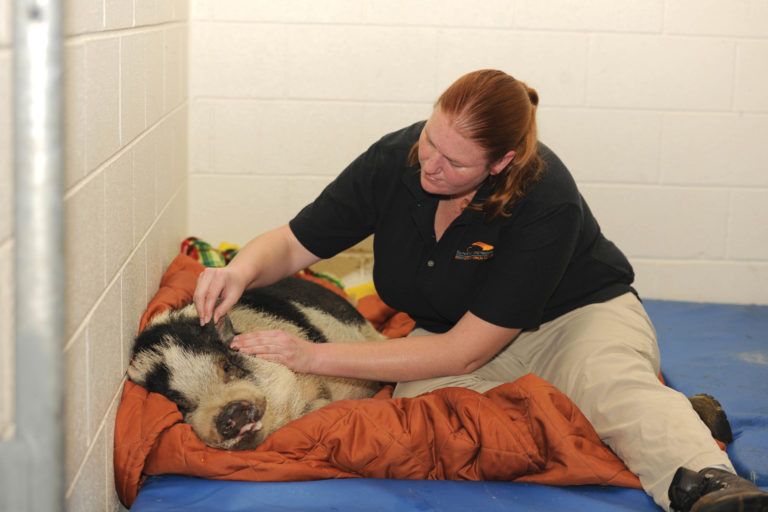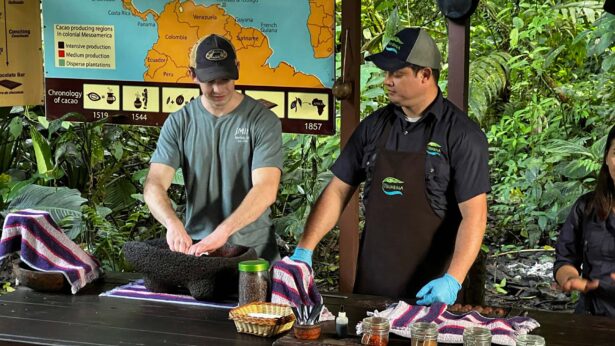By Sandra Harbison
Photos by UT College of Veterinary Medicine
When Katrina Cannon and her family opened the door to flee their burning home, Topper, their orange tabby cat, bolted into the woods.
“It was like driving through the streets of hell,” Cannon says of the family’s escape. They didn’t expect to see their cat again, another loss among a night full of losses.
As a result of ferocious fires that ravaged the mountains in November, the Sevier County Humane Society triaged injured animals, including a burned orange tabby cat, at the fairgrounds with the help of the local veterinary community. Topper the cat, 18 other cats, one dog and two pigs were sent to the veterinary medical center at the UT College of Veterinary Medicine.

The orange tabby was in critical condition with bones exposed on all four limbs. A Facebook post helped identify Cannon as his owner.
“My heart sank when I saw Topper in ICU,” she says with a catch in her throat. “I was pretty sure that visit was my goodbye.”
His road to recovery was fraught with setbacks and secondguessing. With little written in the veterinary literature about burns, the cat’s medical team walked a fine line.
Video shared to the UT College of Veterinary Medicine Facebook page Dec. 9, 2016, with the first time Topper had eaten while at UTCVM.
“Balancing the most humane and loving thing for Topper versus how far we push this medically and surgically remained a topic of discussion the entire time. There were things we could do. The question was, should we?” says Dr. Jeff Biskup, assistant professor of small-animal surgery.
For the benefit of future burn victims, the medical team that treated the animals plans to contribute to the body of knowledge in the veterinary literature. College administration decided not to charge the owners or the animal shelter for the care their animals received. Donations from around the world helped cover the costs.
Topper remained hospitalized for a month, most of that time in ICU. He was returned to his new home with the Cannon family on New Year’s Eve. “He’s the king of the house,” laughs Cannon. “He’s perfect.”

PHOTO BY BRUCE MCCAMISH
Helping Hands
UT Institute of Agriculture faculty, staff and students helped wildfire victims in a variety of ways:
- Department of family and consumer sciences compiled a listing of resources onto a website and helped residents obtain new copies of documents, such as military discharge papers and visas.
- 4-H coordinated a gift card collection valued at more than $60,000 for 4-H members whose families lost their homes.
- Students, staff and faculty organized donation drives for clothing, water and toys for children.
- Department of forestry, wildlife and fisheries faculty and students helped fight outlying fires.
- Human Animal Bond in Tennessee (HABIT) volunteer teams with psychological first-aid certification provided daily animal-assisted therapy at the Red Cross shelter.
- Students, faculty and staff volunteered at the Sevier County Humane Society.
- Companion Animal Initiative of Tennessee helped coordinate veterinary medical supplies for SevierCounty Humane Society and Foster Vols, pairing animals with short-term foster homes.
Charles the Pig heads home from UTCVM in this video posted to Facebook Dec. 20, 2016.



